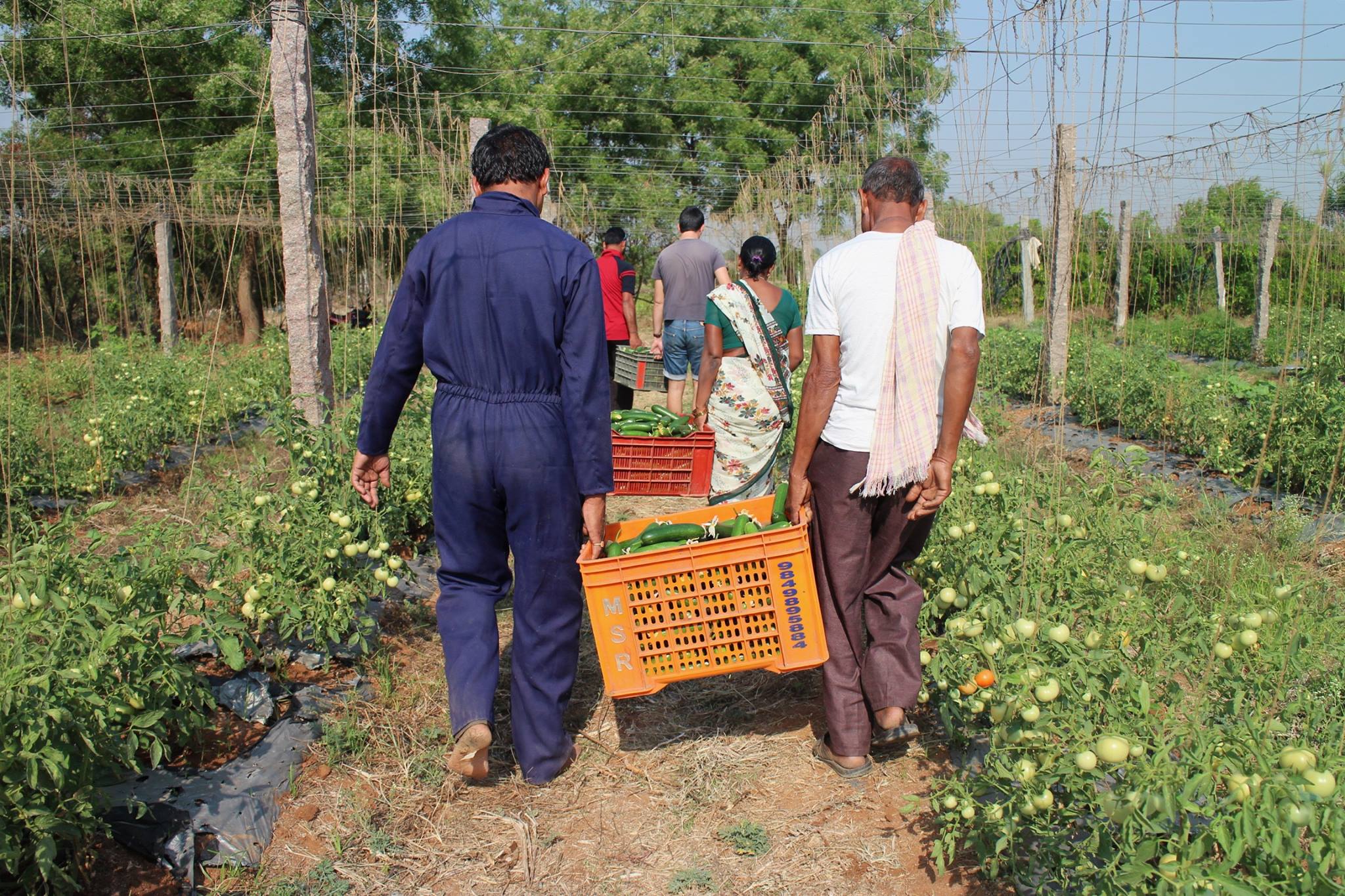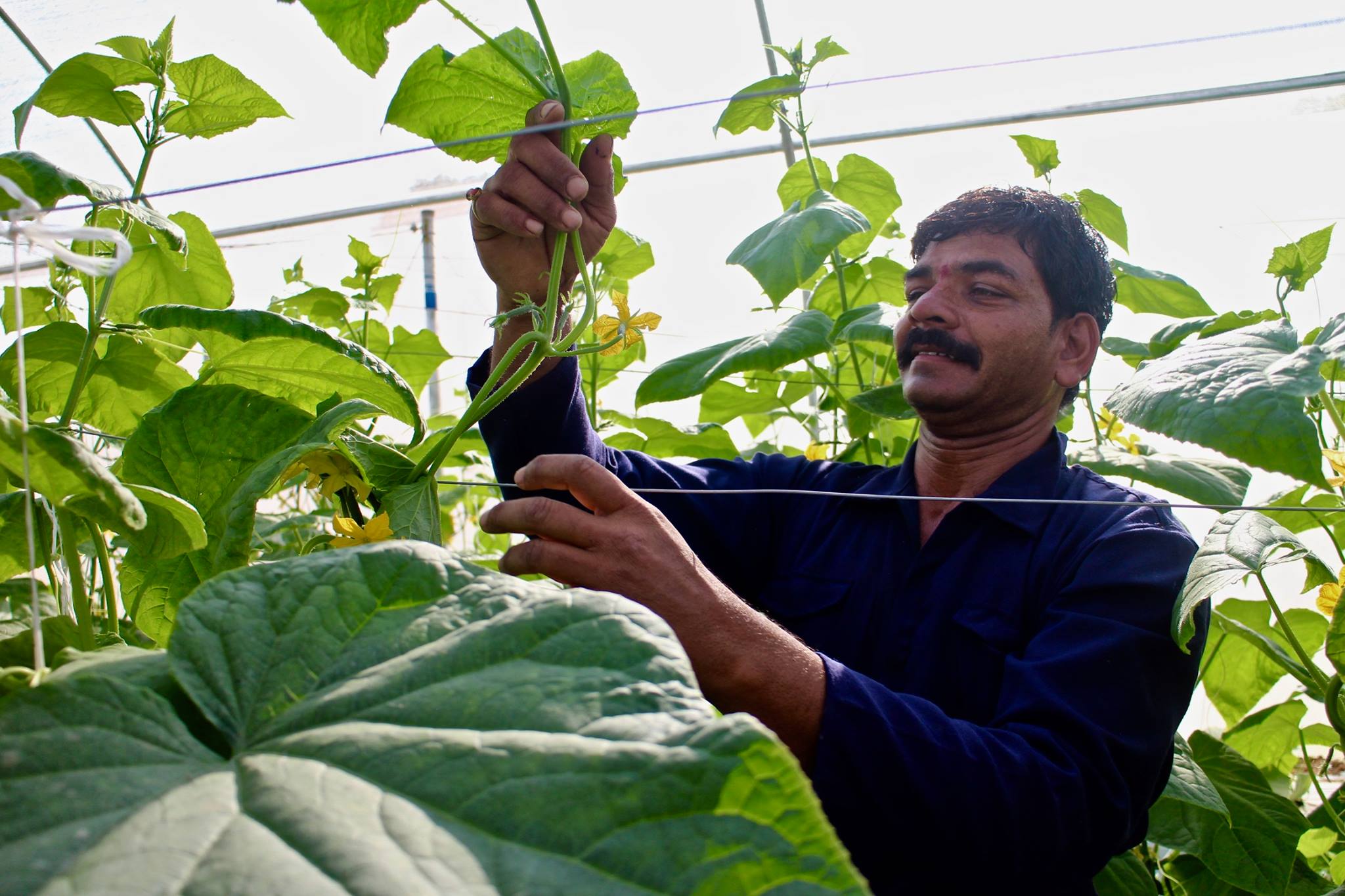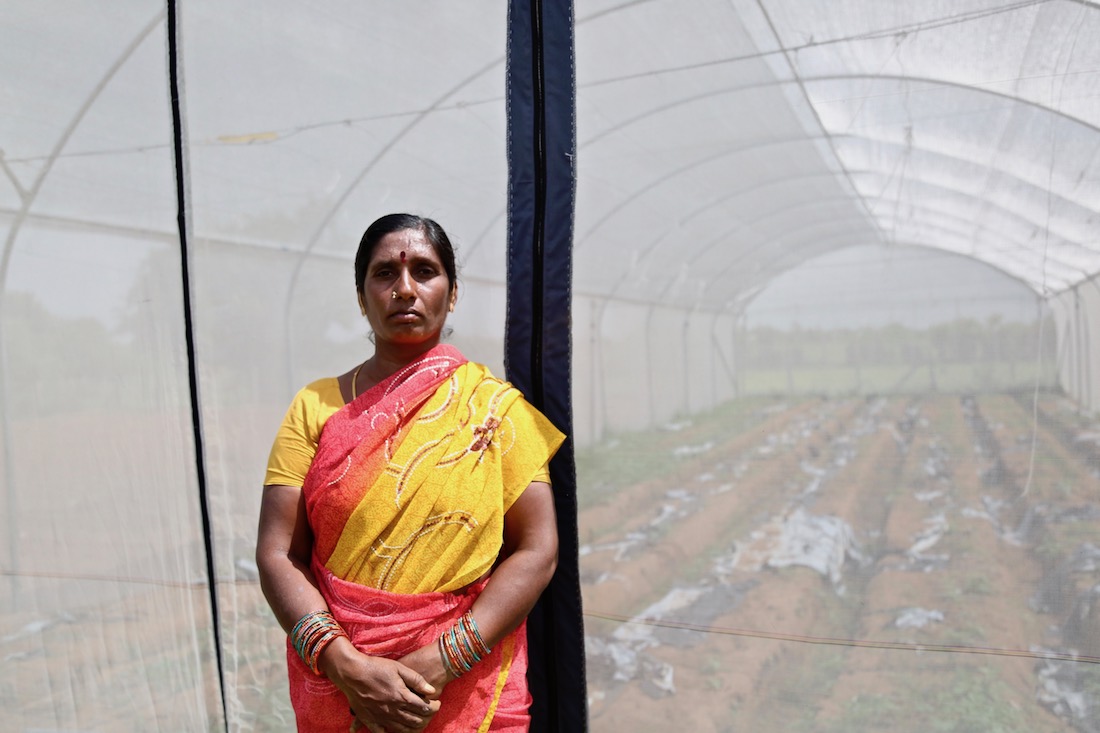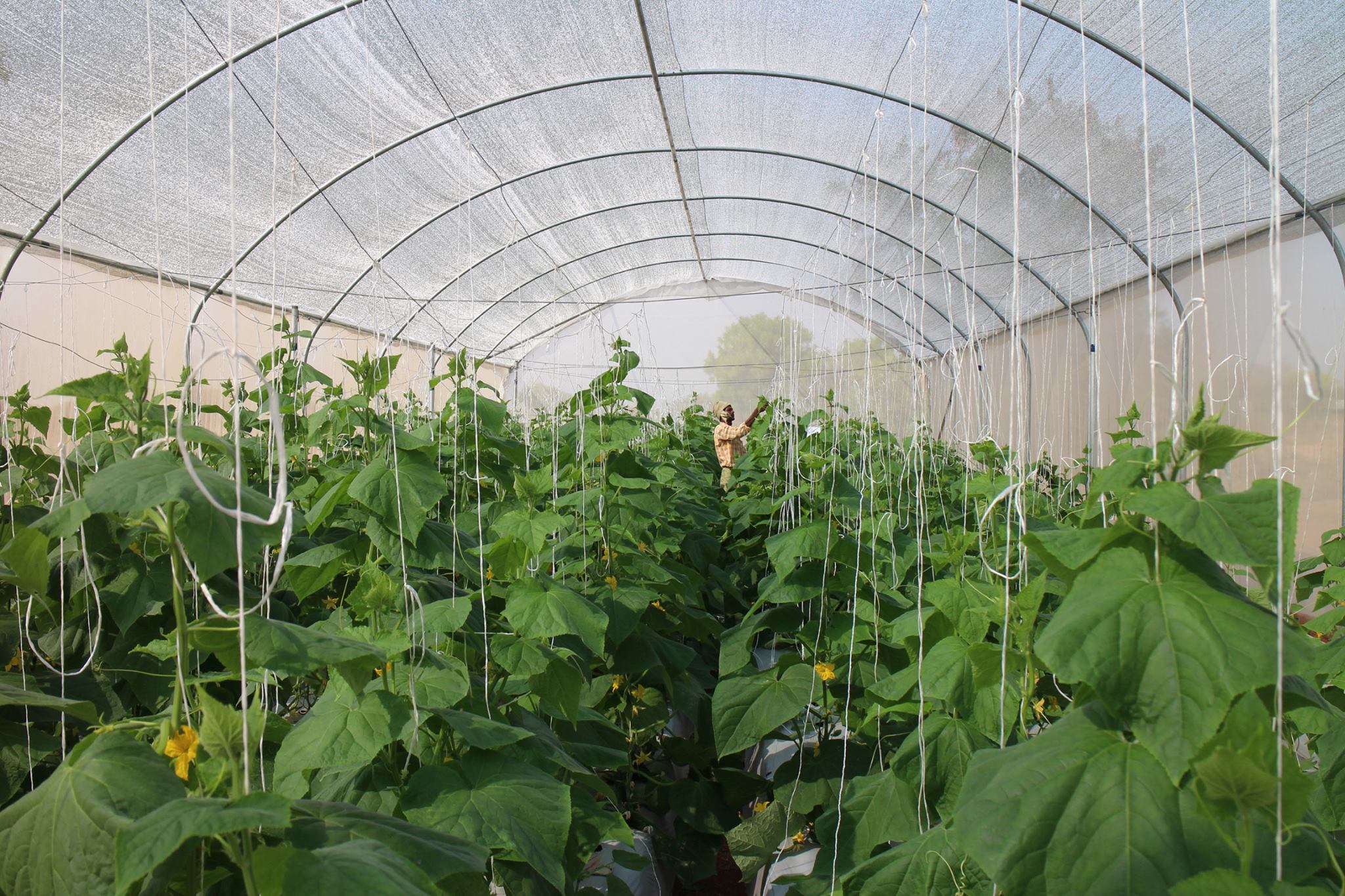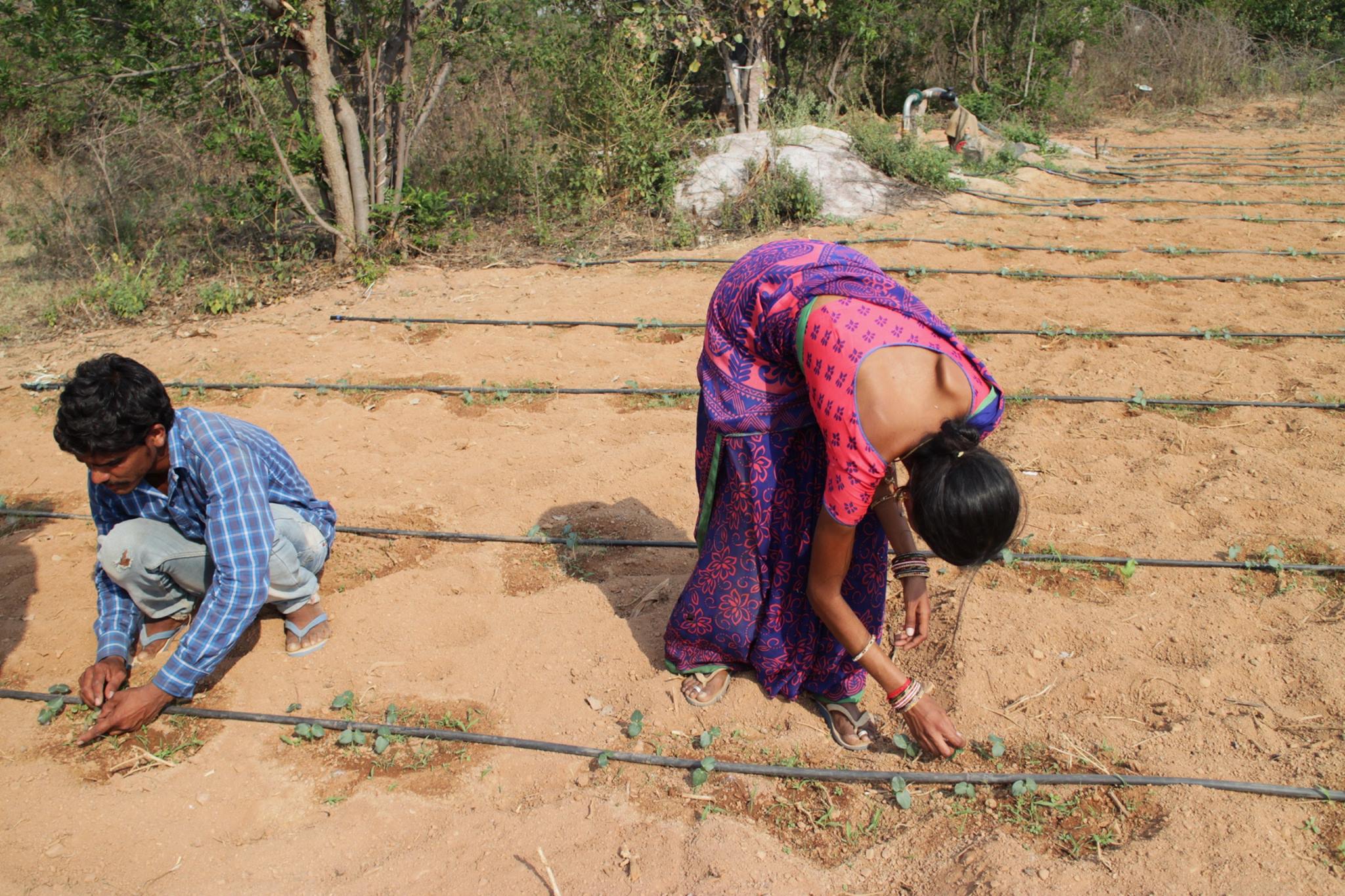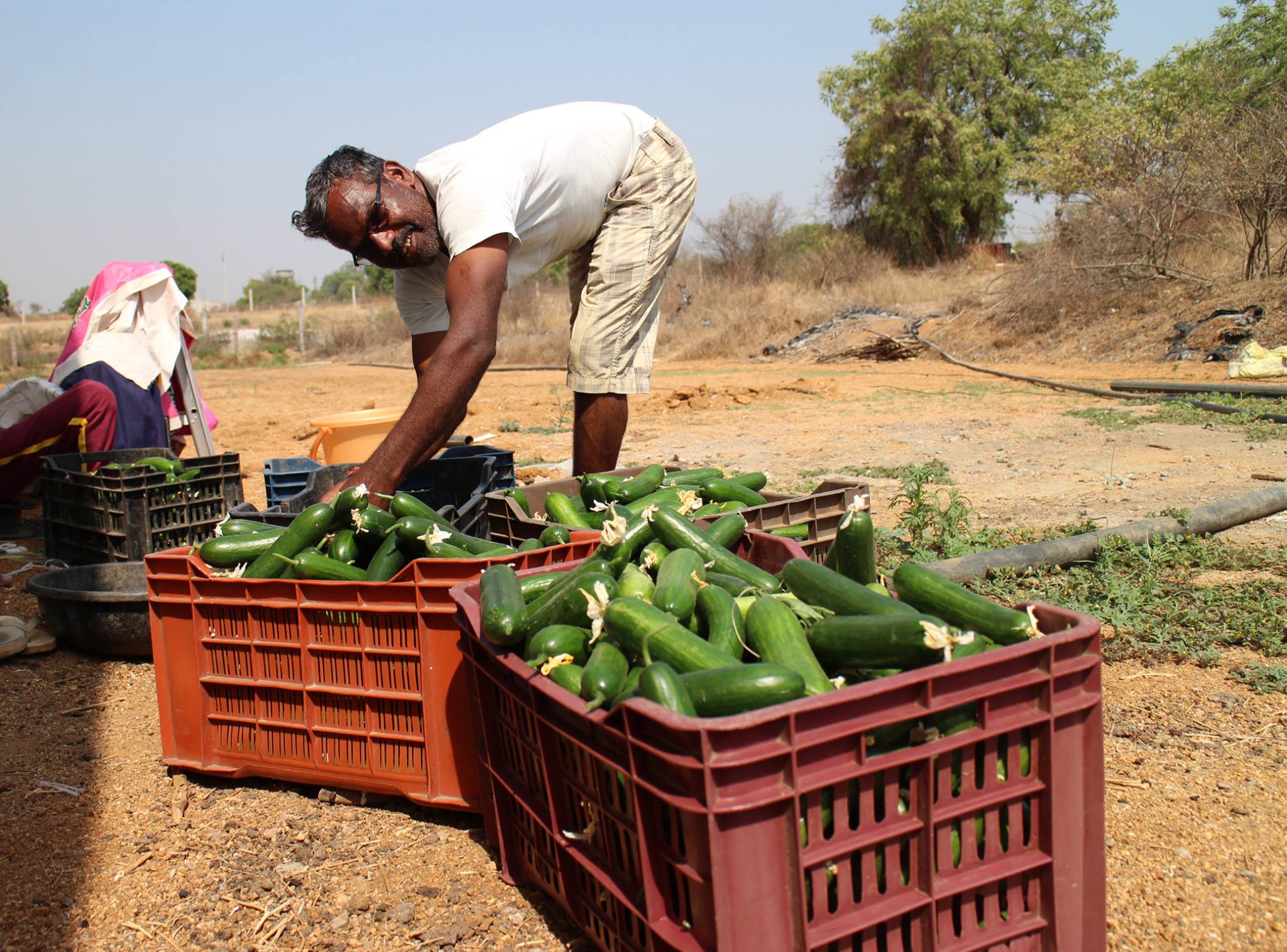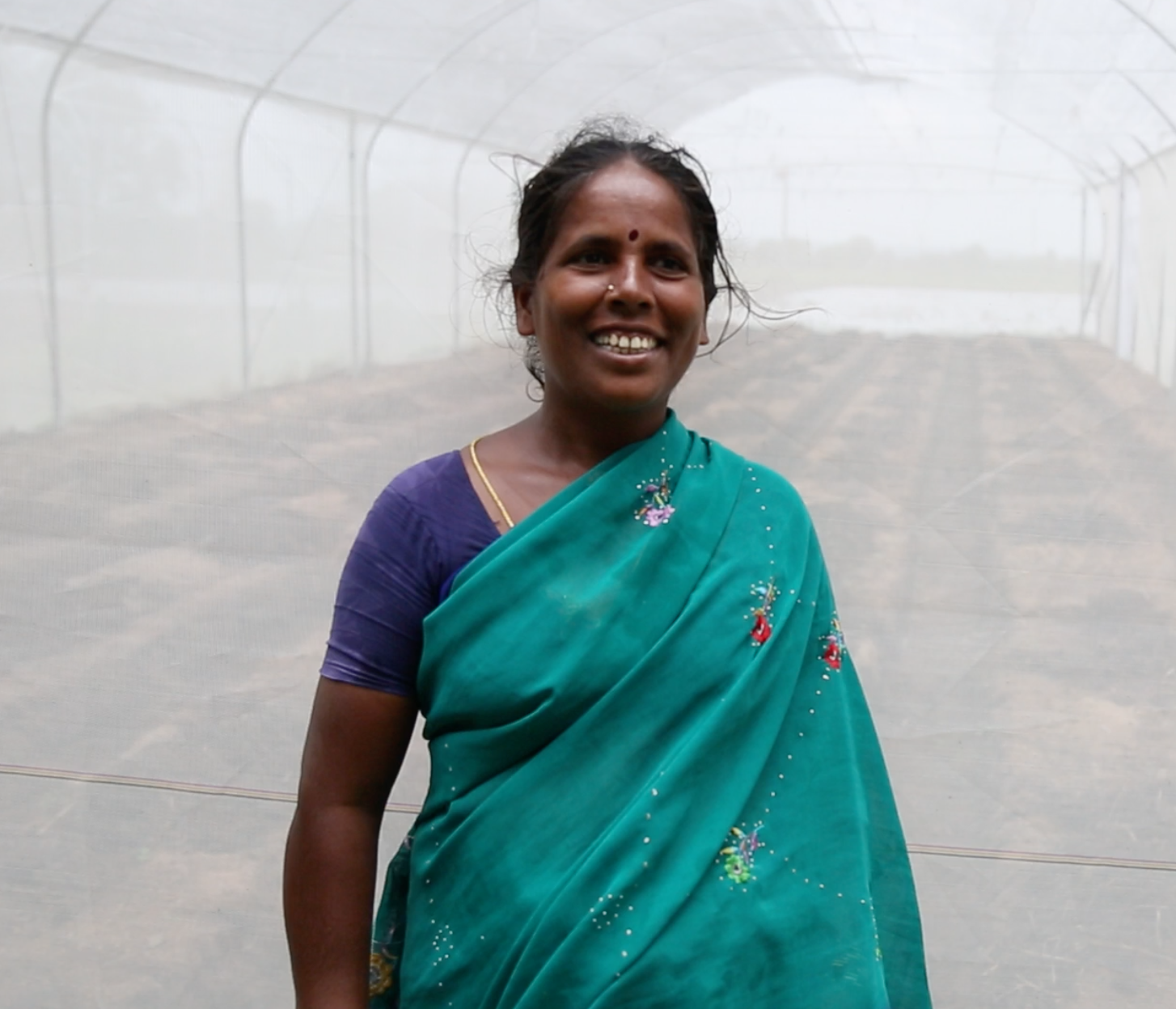Small farmers in India adapt to climate change using high-tech greenhouses
A farmer harvests cucumbers in a Kheyti greenhouse. All images by Janice Cantieri, all rights reserved.
By Janice Cantieri
Farmers in Laxmapur Village, Telangana, a small village in south-central India, have been adapting to climate extremes using low-cost, high-tech greenhouses. These greenhouses aren't like the glass greenhouses seen in North America--they're made with breathable nets that create shade and block out pests. They're also fitted with drip-irrigation systems. Inside the greenhouse the farmers can produce crops using 90 percent less water, even in high heats and drought conditions. The greenhouses are part of a project by Kheyti, an Indian social enterprise aimed at developing solutions that allow small farmers to maintain their livelihoods and adapt to climate extremes.
I've spent the past week and a half getting to know some of Kheyti's farmers.
The first 15 Kheyti farmers met this week before they begin planting capsicum (bell) peppers. During the last crop cycle, which ran from February-mid-May, the farmers grew cucumbers, and averaged about 1.2 tonnes of cucumbers in a three-month period. Many of the farmers said they were able to produce within the 1/16 acre greenhouse what they would otherwise have produced on an entire acre of land, using less water and fewer hired laborers.
The weekly farmers meeting for Kheyti farmers in Laxmapur Village.
Protected cultivation allows these farmers to produce year round, even in the hottest, driest summer months of February to May, when temperatures can reach up to 48 degrees Celsius, or nearly 120 degrees Fahrenheit. The greenhouses can't protect crops when temperatures stay at extremely high levels for extended periods of time, but they provide significant protection for the majority of the growing season.
Many farmers, like Narayana Yellabonia, pictured above, have used the profits earned from the last growing season to pay for their children's educations. When farmers sign up for a greenhouse, Kheyti takes care of negotiating a loan with the bank and connecting the farmer to markets to sell their produce. Farmers get to keep the profit they make after paying Kheyti back 10,000 rupees (about $154 USD) each growing season. Kheyti also helps the farmers sell as a collective, so they are able to sell large amounts of produce to the supermarkets in Hyderabad, the closest major city. The farmers group meets once a week to share ideas, seek answers to questions, and collaborate.
New greenhouses under construction in Laxmapur Village, Telangana, India.
Kheyti has signed on 35 new farmers in Laxmapur, and 15 have started constructing their greenhouses. The new greenhouses feature design improvements, like stronger cables and trellising to support the weight of the vegetables.
New farmer Saraswati Appala signed up for a Kheyti greenhouse after seeing how successful her brother-in-law's harvest was in the neighboring greenhouse.
Kheyti is planning to expand throughout the region, but the founders want to ensure that their mission, company culture and community trust is preserved before scaling up to wide-scale production. I will post again next week when sowing begins on the capsicum peppers!
Kheyti's original 15 farmer group in Laxmapur Village, India.
All rights to words and images reserved by owner, Janice Cantieri.



